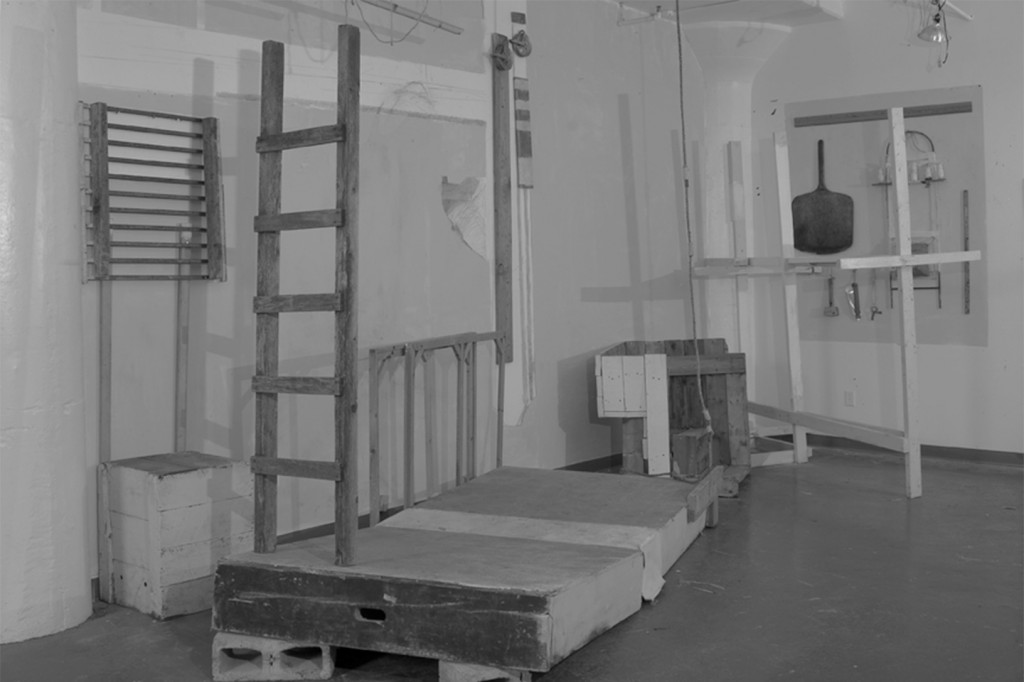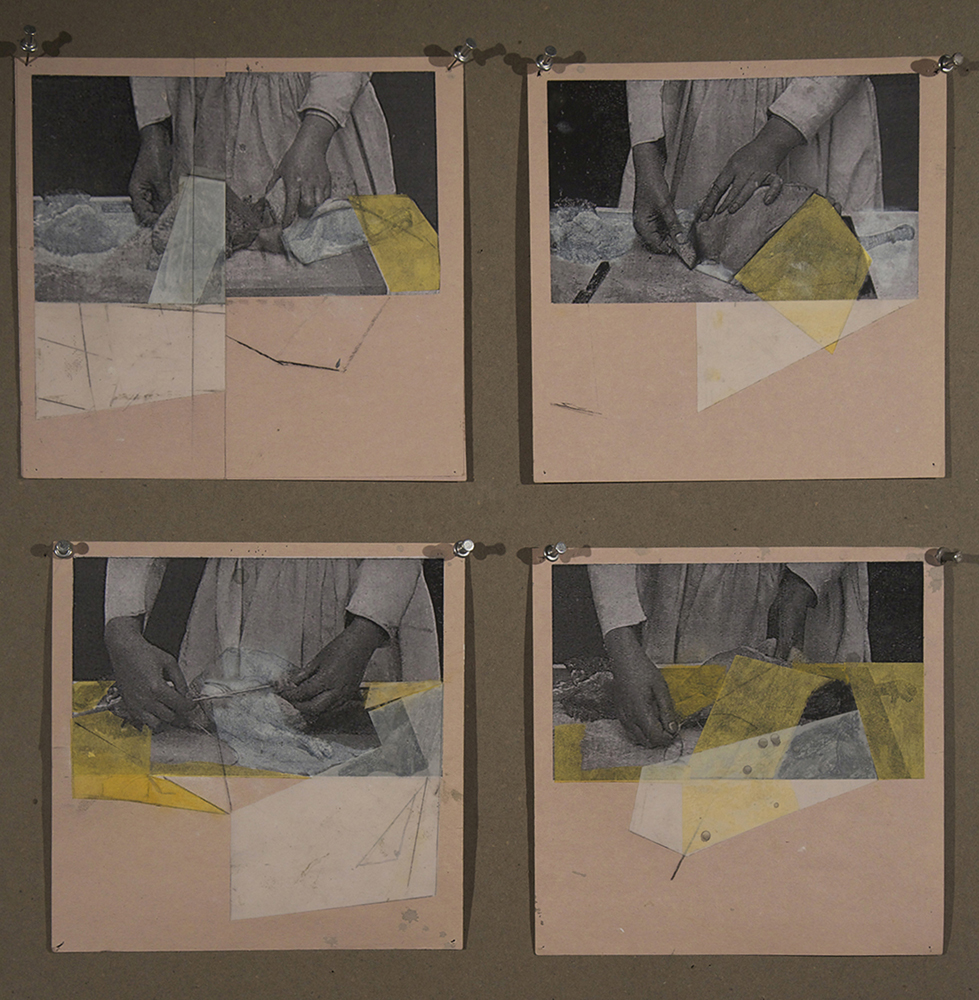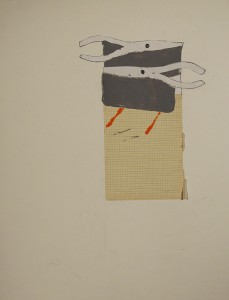This is the twenty-eighth in a series of interviews with each of the Sondheim Award Semifinalists. Finalists have been announced, and will be on exhibit at the Walters Art Museum June 21 to August 17; those not selected as finalists with be exhibited at the Decker, Meyerhoff and Pinkard Galleries at MICA July 17 to August 3, 2014.
Name: Aharon Bumi
Current Location: Baltimore
Hometown: Montreal, Quebec
Previous Education: University of King’s College; Cambridge University

Ascesis – Documentation of Installation, 2011
Found wood, cinder blocks, plaster, assorted tools, paint, and rope
Dimensions variable
(Description: this set was constructed in collaboration with dancer and choreographer, Karina Champoux. Over the course of two weeks, we directed and recorded one another in our use of various materials, supports and contraptions, restructuring them daily. )
How would you describe your work, and your studio practice? Over the last several years, my interests have been oriented around questions of making, working, and building. For me, this has been a way of acknowledging, or perhaps simply imagining, the various codes in which an artistic practice is implicated. What is the space of our working and thinking? And how is it constructed, reconstructed, deconstructed over and over again? In the studio, I tend to pursue these kinds of questions at multiple levels –with larger projects offset by small material experiments.
What part of artmaking to you like or enjoy the most? The least? I like the moments of drawing with purpose – when an idea (a motif etc.) starts to take shape on a page. I dislike the moments associated with “wrapping up” the work – the showing and the telling, the web-life of the thing, the repeated and perhaps unavoidable return to professional practices.
What research do you do for your art practice? Very often, the research consists of holding onto a particular moment in somebody else’s work – a motif, an image, an aspect or particular part of an image, etc. – and keeping it close by. I’ve met writers who say that they sometimes walk around with a specific book in their pocket – not so much to read it as to re-imagine its contents. . . I think my research operates similarly.
Do you ever get in creative dry spells, and if so, how do you get out of them? Yes, for sure, always and repeatedly. By now, it seems like a cycle of necessary contractions. When it happens, I tend to pack up my things, and move for a while into other ways of working and thinking. That time, however long, allows me to come back into a new set of working conditions.
How do you challenge yourself in your work? For a long time, I have been interested in the way that artists consciously restrict themselves to various sets of working parameters. Most recently, these include people like Lygia Clark, Dorothea Rockburne, Al Taylor and Roni Horn. For all of these people, the serial nature of their work represents a kind of repeated investigation into a particular set of materials. At the moment, I think I tend to challenge myself in a similar way. One part of me proposes a field of limitations. And the other part tries to extend these limitations through various experiments.
What is your dream project? I recently met someone who was working in an aeronautical lab with a 40 foot simulated wind-tunnel. After we met, I fantasized about making a work in the wind-tunnel. Undoubtedly, I am misunderstanding what the space looks like.


